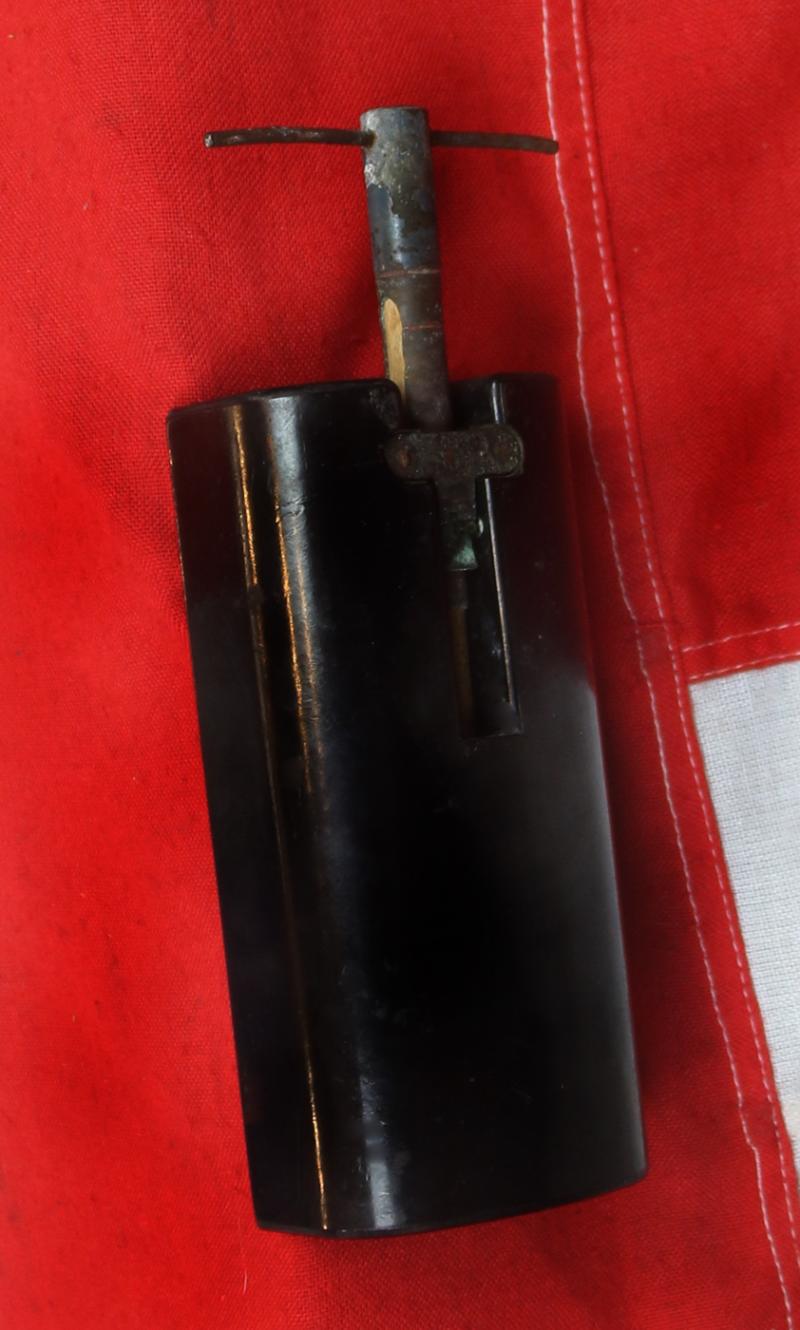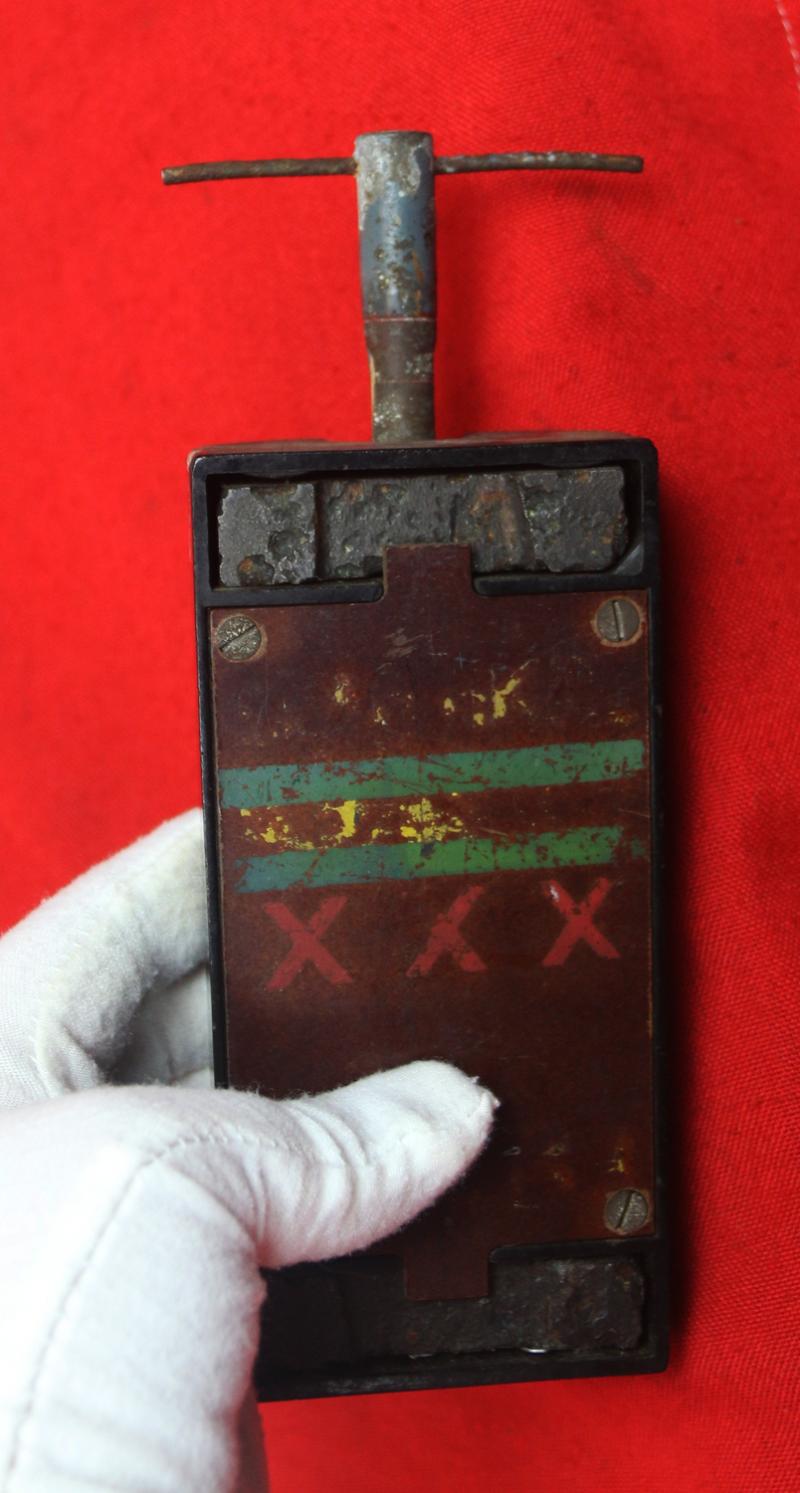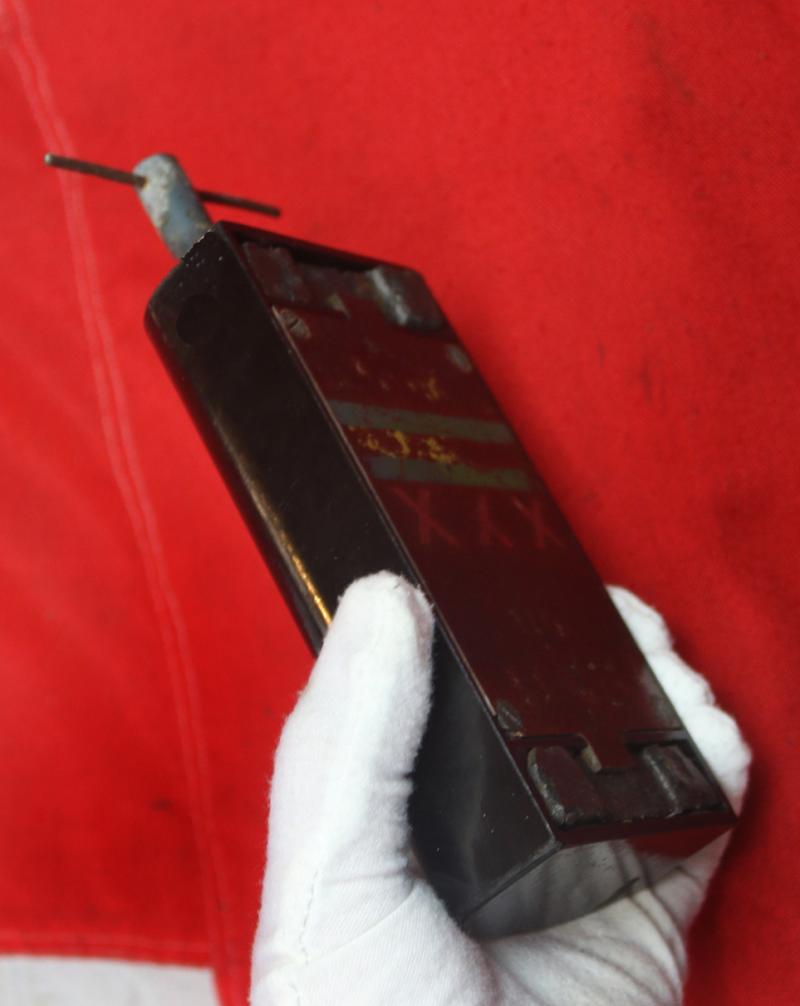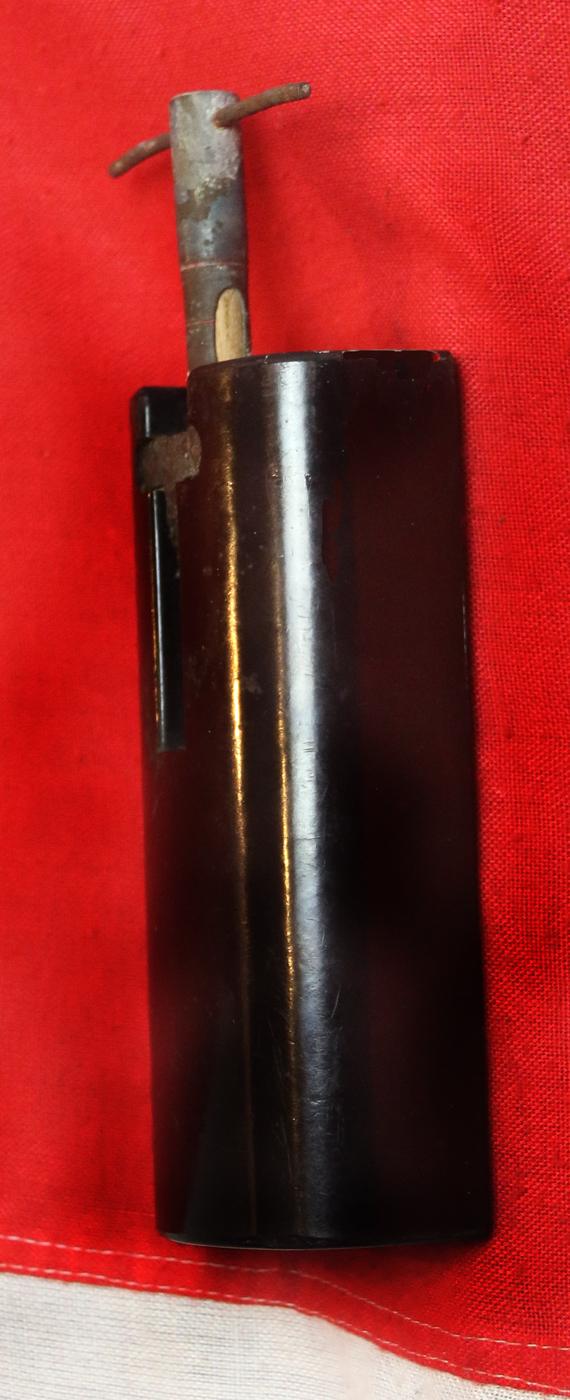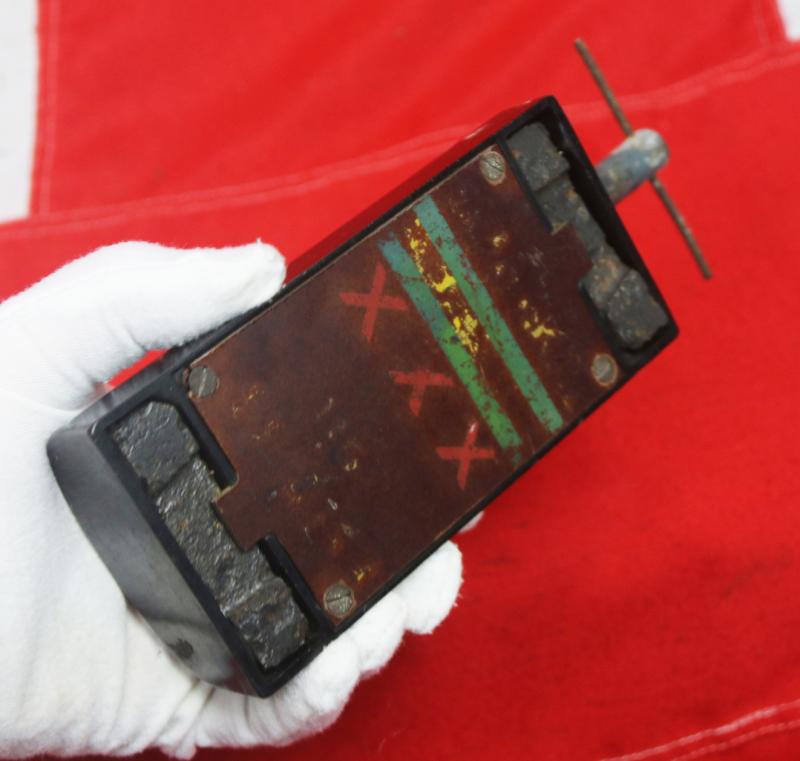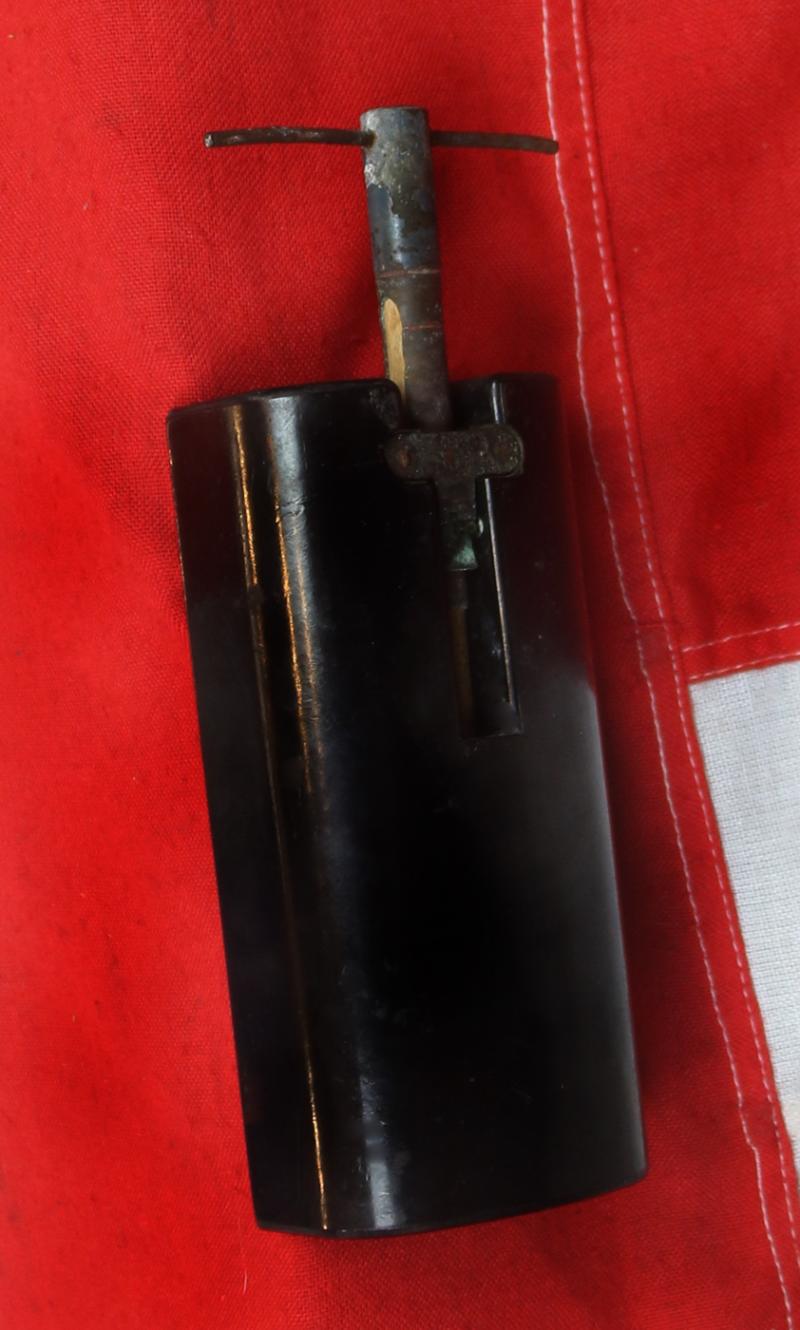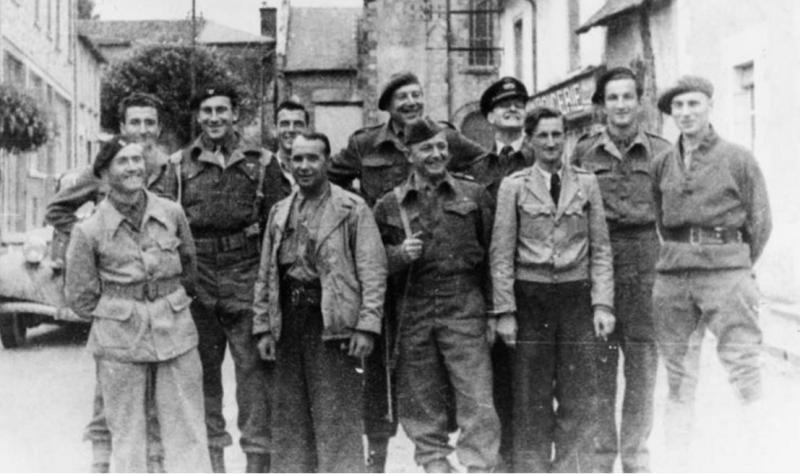An Original WW2 SOE Issue, Special Operations Executive, Sabotage Clam Mine From Section XV. Designed by Charles Fraser Smith, The Inspiration For James Bond's 'Q'
With its original wooden 'dummy' time pencil as issued before use.
During the Second World War Britain’s Special Operations Executive (SOE) developed a whole series of sabotage devices for use behind enemy lines.
The SOE was created in 1940 on the orders of Winston Churchill. The organization was so secret that not even Parliament was aware of its existence. Among its successes were the destruction of the Nazi nuclear program and the capture of Nazis.
Charles Fraser Smith was the man who organized Section XV of the SOE, and who developed the secret tools used by their agents. He is often mentioned as being the inspiration for the character Q from the James Bond novels and movies. Other creations of Section XV included the cat bomb, bat bomb, and limpet mine
The MKIII Clam is a small time-device with a magnetic base which enables it to be attached instantly to any flat iron or steel surface. It consists in the main of a Bakelite shell in the form of an oblong box with rounded corners. The base of this box has a detachable lid to a compartment intended to hold the explosive, in this case completely empty and inert, whilst at each end are powerful magnets.
It was also designed as pocket sized so if an SOE agent was in civilian dress it could be easily concealed and be withdrawn at just a second's notice and attached to, say, a German staff car, an ammunition truck or the boiler of a train
The Clam is a small time-device with a magnetic base which enables it to be attached instantly to any flat iron or steel surface.
It consists in the main of a bakelite or metal shell in the form of an oblong box with rounded corners.
The base of this box has a detachable lid, whilst at each end is a powerful magnet.
In the top of the box is a recess or tube to take a standard "L" Delay time pen.
The units are so designed that they can be paired, the magnet faces being put together.
Each Clam was supplied and equipped with a lid held in position by 4 countersunk screws and with a wooden dummy to take the place of an "L" Delay time pencil with a detonator.
The standard "L" Delays used are issued in cartons of 10, and in timings of: 1-hour, 6-hours, 12-hours, 24-hours, 3-days, 7-days, 14-days and 28-days.
Delay ("No. 9 delay switch")
Another, subsequent type was developed by Millis Jefferis of MD1 known as the "Lead Delay switch" or officially "Switch, No. 9, L Delay". Instead of relying on the chemical action of a corrosive liquid on metal (which was subject to temperature variation), it used a piece of metal under stress – the metal in question being a lead alloy that was extremely affected by mechanical creep. A piece of this lead was notched to a set diameter, the diameter setting the time delay. When the starting pin was removed, this wire was placed under tension by the spring-loaded striker, and began to gradually stretch. After a certain time, it would snap at the notch and allow the striker to hit the percussion cap.
The delay could be set from a matter of minutes to hours. Manufacture was entirely by MD1. Generally speaking L-delays were slightly less reliable and had shorter delays, but were more reliable underwater (if a No. 10 fuze developed a leak, water would dilute the corrosive liquid and increase the delay or stop the fuze from working).
One type, the British Number Ten Delay Switch (official name, "Switch, No. 10, Delay" and often referred to as a "timing pencil"), was made of a brass (or in later versions aluminium) tube, with a copper section at one end which contained a glass vial of cupric chloride (the liquid was widely and erroneously reported to be sulfuric acid, while beneath the vial was a spring-loaded striker under tension and held in place by a thin metal wire. The timer was started by crushing the copper section of the tube to break the vial of cupric chloride, which then began to slowly erode the wire holding back the striker. When the wire eventually parted, the striker was propelled down the hollow centre of the detonator, hitting the percussion cap at the other end of the detonator.
Number ten delay switches had delays ranging from 10 minutes to 24 hours and were accurate to within plus or minus two or three minutes in an hour's delay, and plus or minus an hour in a 12-hour delay, though environmental conditions could affect this. The switches were typically issued in packs of five, all the switches in a pack having the same delay.
The briefcase bomb used in the July 20 plot to assasinate Hitler, used a captured British pencil detonator inserted into a block of British plastic explosives weighing approximately two pounds. The bomb was set to 30 minutes and detonated as planned, but Hitler survived with minor injuries. Stauffenberg could not prepare the second block, though. He got rid of it while driving through the forest to the airfield. His driver, Leutnant Erich Kretz, reported seeing Werner von Haeften throw something into the woods in his mirror.
Empty, inert, and safe.
Code: 25250

